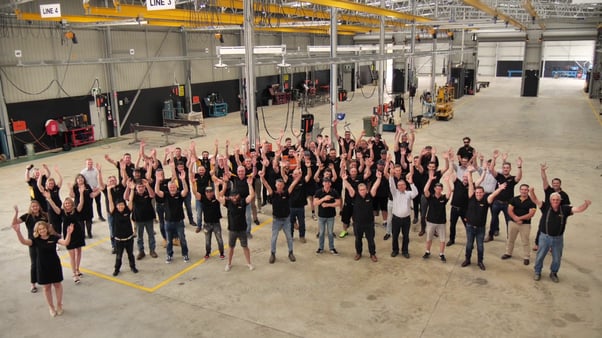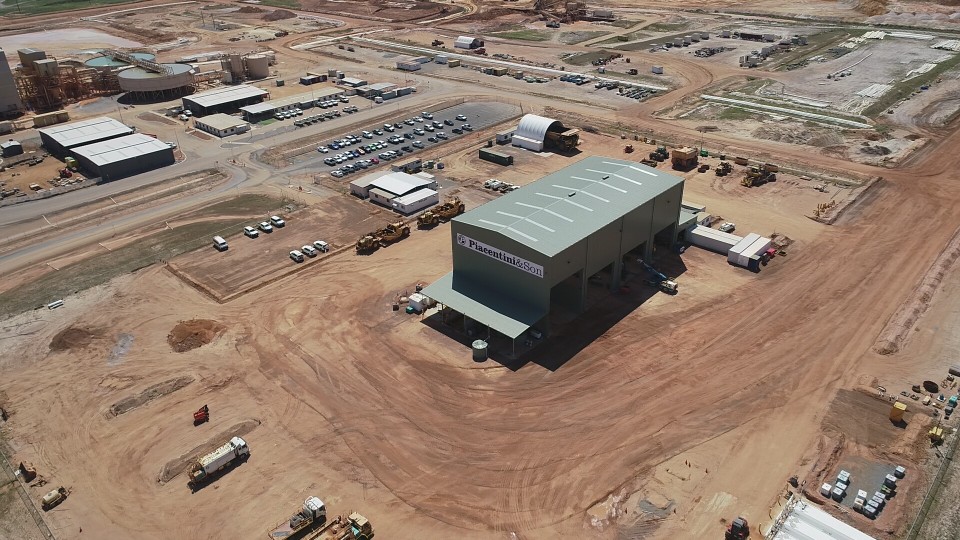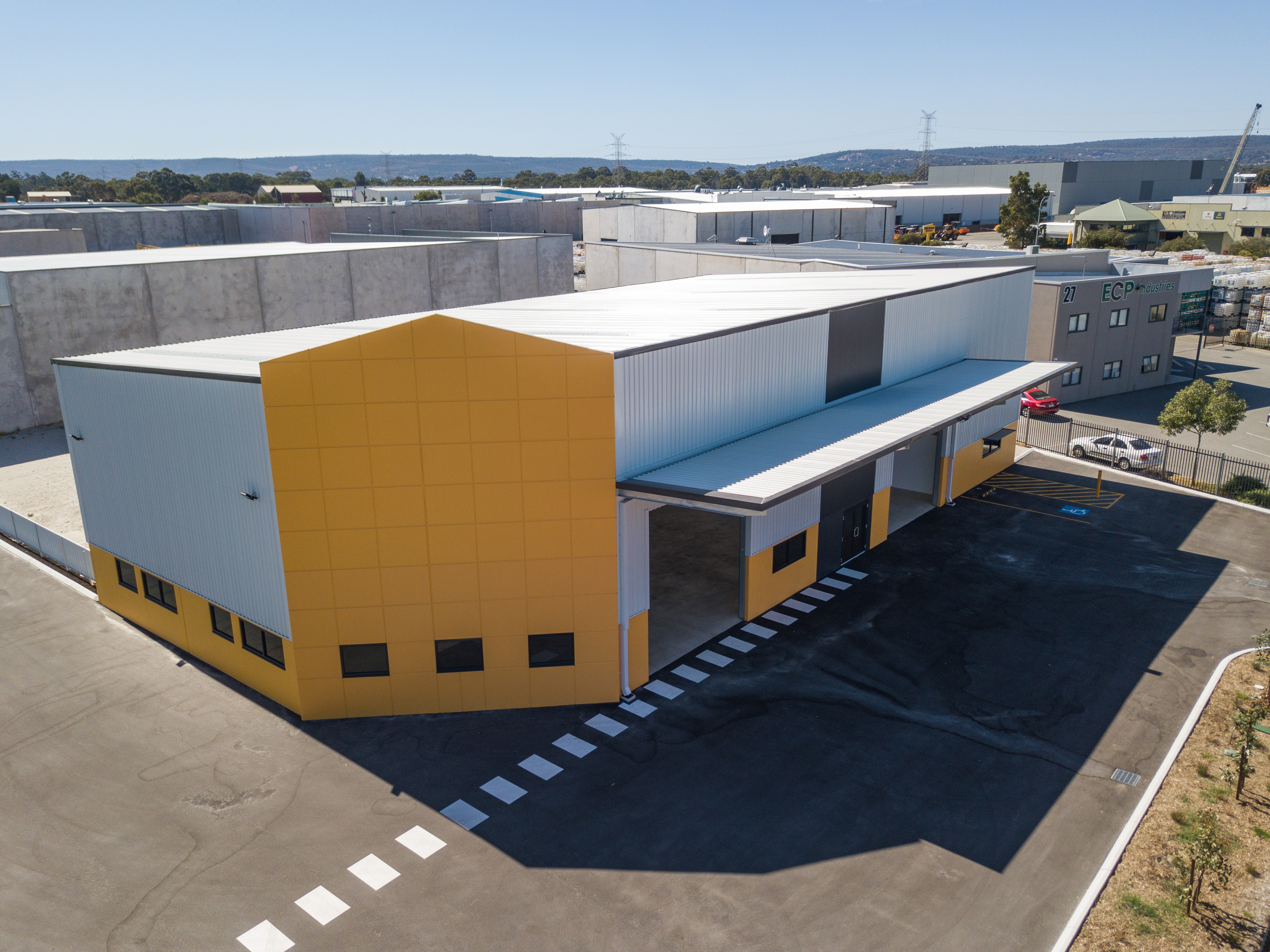Factors to consider when building industrial sheds
In an era focused on productivity and innovation, health and safety in large industrial sheds can't be overlooked. These structures present unique safety challenges that are crucial for protecting lives and ensuring long-term business viability.
Risk mitigation
Work Health and Safety (WHS) legislation is an integral part of risk mitigation. These rules are designed based on years of research and case studies to minimise the risk of workplace accidents, injuries, and fatalities. By following the guidelines, businesses can create a safer environment for their workers and visitors, thereby reducing the likelihood of incidents that could halt production and lead to legal repercussions.
Legal protection
Compliance with WHS regulations isn't just a moral imperative; it's a legal one. Non-compliance can result in hefty fines, legal penalties, and even the closure of the business in extreme cases. Following these laws not only helps in avoiding these punitive measures but also strengthens the legal standing of the company in the case of lawsuits or disputes.
Employee satisfaction and productivity
Employees are more likely to be engaged and productive when they know that their safety is a priority. A safe work environment fosters better morale and job satisfaction, reducing turnover rates and the associated costs of hiring and training new staff. Moreover, a motivated workforce can lead to increased efficiency and higher quality of work, which can significantly impact a company’s bottom line.
Financial savings
While implementing safety measures may require an initial investment, the long-term financial benefits are significant. Fewer accidents mean less downtime, reduced worker's compensation claims, and lower insurance premiums. The costs associated with accidents, such as equipment repair or replacement, are also minimised. All these contribute to overall financial stability and may even provide a competitive edge in the market.
Brand and reputation management
In the age of social media and rapid information exchange, a single accident can severely damage a company's reputation. Compliance with WHS legislation not only prevents such mishaps but also sends a positive message to clients, investors, and the public. Businesses known for their stringent safety measures are more likely to attract and retain customers, thereby enhancing brand value and long-term growth prospects.
Environmental responsibility
Environmental Protection legislation also must be taken into consideration when building industrial sheds. By complying with these laws, companies contribute to environmental conservation efforts. This is increasingly important in today’s socially conscious market and can serve as a selling point for environmentally aware clients and stakeholders.
Continuous improvement
Lastly, the discipline instilled by consistently following Work Health & Safety guidelines often leads to a culture of continuous improvement. Companies that take a proactive rather than a reactive approach to health and safety often find other areas of the business like quality control, operational efficiency, and resource management, also tend to improve, creating a holistic cycle of betterment that benefits everyone involved.
By taking a proactive approach to health and safety when constructing and operating within large industrial sheds, businesses stand to gain in multiple dimensions—ranging from the welfare of their employees to the very sustainability of the enterprise.
What are the Australian legislation and guidelines that businesses must follow regarding warehouse safety?
It's essential to note that the information provided here is current as of September 2023, so depending on when you are reading this, the regulations may have evolved. In Australia, businesses operating warehouses or large industrial sheds need to adhere to a variety of laws and regulations that focus on ensuring a safe and healthy work environment. Some of the main frameworks that cover this area are:
Work Health and Safety Act
The Work Health and Safety (WHS) Act 2020 is the primary piece of legislation governing occupational health and safety in Australia. It lays down general obligations that employers must fulfil to ensure the health and safety of their employees. The WHS Act 2022 is complemented by Work Health and Safety (WHS) Regulations 2022, which provide more detailed requirements.
Safe Work Australia
Safe Work Australia is an agency that develops national policies for work health and safety and workers’ compensation. It provides comprehensive guidelines, data, and recommendations for ensuring safety in the workplace, including warehouses.
Codes of Practice
In addition to legislation, there are various Codes of Practice that offer practical guidance on how to meet WHS obligations. These cover aspects like how to manage risks, safely store hazardous materials, and ensure machinery and equipment are safely operated and maintained.
Australian Standards
Various Australian Standards (AS/NZS) apply to warehouse safety. These standards offer technical guidelines on everything from racking systems to forklift operations. While these standards are not law, they are referenced in legislation and can be used as evidence of whether an organisation has met its duty of care.
State and territory regulations
Workplace safety is also governed at the state and territory level, and there may be additional local regulations that businesses must follow. States and territories have their own work health and safety departments, such as WorkSafe (WA), WorkSafe Victoria, and SafeWork NSW, which enforce regulations and provide local guidance.
Hazardous substances and dangerous goods
Specific legislation exists for the handling, storage, and transport of hazardous substances and dangerous goods. This includes guidelines on labelling, Safety Data Sheets (SDS), and emergency management.
Electrical safety
Warehouses often contain complex electrical installations, and there are strict guidelines that businesses must follow. These include regular inspection and tagging of electrical equipment, safe design and installation practices, and employee training on electrical safety.
Emergency procedures and first aid
Employers are required to have in place emergency procedures and first aid facilities. This includes conducting regular fire and evacuation drills, ensuring that fire safety equipment is accessible and functional, and providing adequate first aid supplies and trained first aid personnel.
By understanding and following these frameworks, businesses can create a safe working environment, mitigate risks, and ensure that they are in compliance with Australian law. Failure to adhere to these regulations can result in significant penalties, including fines and legal action.
How can industrial sheds be fitted out to protect against fire and chemical hazards?

Ensuring that industrial sheds are equipped to protect against fire and chemical hazards is a critical component of workplace safety. Here are some general insights into how industrial sheds can be fitted out for these purposes:
Fire safety measures
- Fire-resistant materials: Choose construction materials that are fire-resistant. Walls, ceilings, and floors made from these materials can significantly slow the spread of fire.
- Fire extinguishers and fire blankets: Place these in easily accessible locations, and ensure they are suitable for the types of fire risks specific to your facility (e.g., electrical, chemical).
- Sprinkler systems: An automated sprinkler system can control a fire until emergency services arrive.
- Fire doors and exits: Install fire-resistant doors that close automatically and clear, well-marked emergency exits that are easily accessible.
- Smoke detectors and alarms: Install a sufficient number of smoke detectors and alarms, integrated into a central monitoring system if possible.
- Ventilation systems: Proper ventilation can help to remove smoke and potentially toxic fumes in the event of a fire.
- Fire safety training: Regular training sessions should be conducted for employees to educate them on how to use fire safety equipment and what to do in case of a fire.
Chemical safety measures
- Chemical storage cabinets: Use cabinets designed for chemical storage, with features like spill containment and ventilation.
- Safety data sheets (SDS): Keep these readily available and ensure all employees know how to interpret them.
- Labelling: All chemical containers should be correctly labelled, indicating the type of substance, hazards associated, and proper handling procedures.
- Personal protective equipment (PPE): Provide appropriate PPE such as gloves, goggles, and respirators for handling chemicals.
- Ventilation: Use industrial-grade ventilation systems to ensure that fumes from chemicals do not accumulate.
- Chemical handling training: Like fire safety, training sessions on proper chemical handling and emergency procedures should be mandatory for all employees.
- Spill kits: Have chemical spill kits readily accessible, and train employees on how to use them correctly.
- Segregation: Store incompatible chemicals separately to prevent dangerous reactions in case of spillage or fire.
Integrated safety measures
- Emergency response plan: Develop a comprehensive emergency response plan that covers both fire and chemical hazards.
- Regular inspections: Conduct regular safety inspections to ensure all fire and chemical safety measures are in place and functional.
- Safety signage: Use adequate safety signs to indicate fire and chemical hazards, including directional signage for emergency exits and equipment.
By incorporating these features into the design and operation of an industrial shed, businesses can significantly mitigate the risks associated with fire and chemical hazards. This not only ensures compliance with safety regulations but also protects employees, equipment, and the business as a whole.
Should I be keeping surveillance footage of the inside and outside of my industrial shed?

Keeping surveillance footage of both the inside and outside of your industrial shed offers multiple advantages that extend beyond basic security measures. Here are some reasons why you should consider implementing this practice:
Security and crime prevention
- Deterrence: The presence of cameras can act as a deterrent to potential burglars, vandals, or trespassers.
- Evidence: In case of a security breach, surveillance footage can provide invaluable evidence for identifying perpetrators or understanding the methods used for the breach.
Employee safety
- Monitor high-risk areas: Cameras placed in hazardous zones or areas with valuable equipment can help in ensuring safety protocols are followed.
- Emergency response: In the event of an emergency such as a fire or chemical spill, footage can guide first responders in understanding the situation and planning their actions more effectively.
Accountability and productivity
- Employee monitoring: Cameras can help ensure that employees are productive and adhere to safety guidelines.
- Timekeeping: Surveillance can assist in monitoring when employees arrive and leave, providing an additional layer of timekeeping alongside traditional methods.
Legal protection
- Liability: Video footage can serve as evidence in the case of lawsuits, helping to prove or disprove claims related to accidents, harassment, or unsafe working conditions.
- Compliance: Some industries require surveillance for regulatory compliance. Video records can show that your business is adhering to industry standards and regulations.
Operational insights
- Traffic patterns: Understanding how people move around the space can help optimise workflow, emergency exits, and general layout for better efficiency and safety.
- Inventory management: Cameras aimed at storage areas can help in tracking inventory, identifying missing items, or pinpointing areas where more secure storage solutions are needed.
Quality assurance
- Process monitoring: Surveillance can help ensure that manufacturing or operational processes are being conducted correctly, which is vital for quality control.
- Remote monitoring: Modern surveillance systems allow for remote monitoring, enabling you to oversee operations even when you're not on-site.
Incident investigation
- Internal investigations: In case of theft, harassment, or other internal issues, surveillance footage can be crucial for conducting a fair and thorough investigation.
- Accident review: Should an accident occur, video footage can help identify what went wrong, aiding in future prevention strategies.
By keeping surveillance footage of both the interior and exterior of your industrial shed, you're investing in a multi-faceted tool that enhances security, improves operational efficiency, and safeguards your employees and business assets.
What sort of cost should I be expecting when fitting out my industrial shed with safety features and precautions?
The costs of fitting out an industrial shed with safety features and precautions can vary widely based on the size of the facility, the nature of the operations, and the specific risks involved. However, here's a broad outline of the kinds of expenses you might incur:
Types of costs
- Basic safety equipment: Fire extinguishers, first aid kits, and safety signage can be relatively inexpensive, with costs ranging from a few hundred to a couple of thousand dollars depending on the size and complexity of the facility.
- Advanced safety systems: Automated sprinkler systems, alarm systems, and advanced fire doors could cost anywhere from $5,000 to over $50,000, depending on your needs.
- Chemical safety: Specialised storage cabinets, spill kits, and ventilation systems for chemical safety could range between $2,000 and $20,000.
- Surveillance systems: High-quality cameras and surveillance systems can range from $1,000 for basic systems to $20,000 or more for advanced setups with remote monitoring.
- PPE (Personal Protective Equipment): Depending on the industry, quality PPE can cost anywhere from $500 to several thousand dollars for outfitting all employees.
- Training programs: Investing in comprehensive training programs could cost several thousand dollars annually but is essential for keeping your team well-versed in safety protocols.
- Consultancy and audits: Professional safety audits and consultancy fees can range from $1,000 to $10,000 or more, based on the extent and depth of the audit.
- Ongoing maintenance: Don't forget the costs of maintaining and periodically upgrading safety systems, which could be around 10–20% of the initial investment annually.
Why these costs are worth It
- Risk mitigation: The foremost benefit is the protection of human life. By investing in safety, you significantly reduce the risk of accidents, injuries, and fatalities.
- Legal compliance: Failure to comply with safety regulations can result in hefty fines and legal action, costs that can far outweigh the initial investment in safety measures.
- Business continuity: Accidents can halt operations and lead to significant loss of income. A secure facility ensures that your operations continue smoothly.
- Employee morale and productivity: A safe work environment boosts employee morale and productivity, indirectly contributing to your bottom line.
- Insurance premiums: Investing in safety can lower your liability and thus may reduce insurance premiums.
- Reputation management: Businesses known for strong safety records are more likely to attract and retain clients, providing a competitive edge in the marketplace.
In summary, while the costs of implementing thorough safety features and precautions in your industrial shed can be substantial, they represent a prudent and necessary investment. The benefits—ranging from risk mitigation and legal compliance to enhanced productivity and reduced insurance premiums—make it money well spent.
Choosing AUSPAN for your next building project

Choosing AUSPAN as your commercial builder offers a distinct advantage when it comes to prioritising safety in industrial shed constructions. With a deep understanding of Australian legislation like the Work Health and Safety Act & Regulations, Codes of Practice, and state-specific guidelines, AUSPAN is well-equipped to deliver projects that meet or exceed safety standards.
Partnering with AUSPAN means creating a work environment that protects human life, ensures business continuity, and upholds your reputation for excellence. Our holistic approach to safety makes us an ideal choice for any business aiming to build a state-of-the-art, safe, and compliant industrial building.
 sales@auspangroup.com.au
SEND US A MESSAGE
sales@auspangroup.com.au
SEND US A MESSAGE
 1300 271 220
CALL US
1300 271 220
CALL US




-1.png)